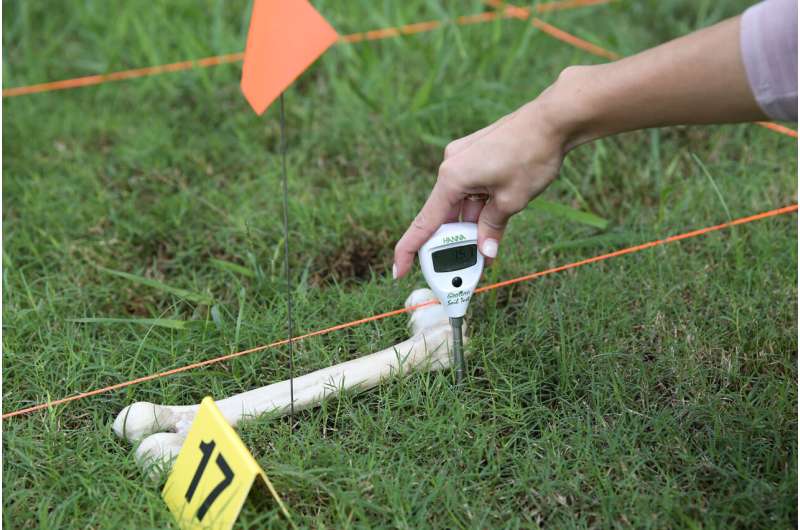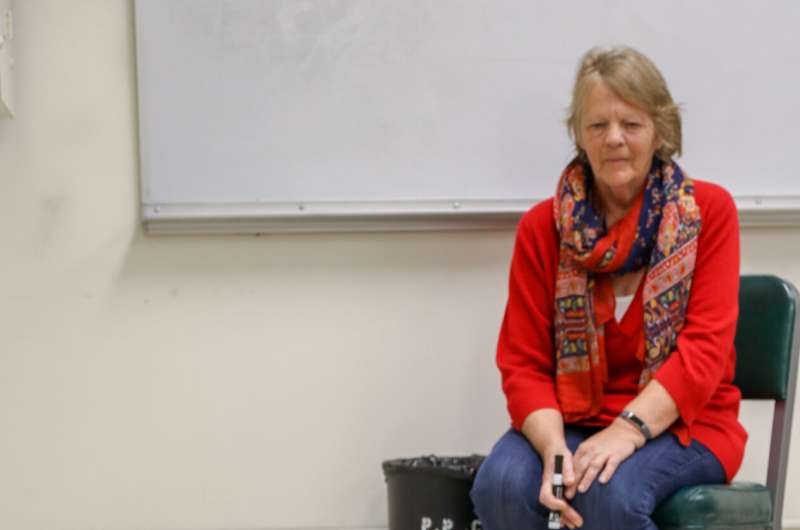Soil scientists help law enforcement find answers in crime scenes

We have seen them on TV, the crime scene investigators who sift through the minutiae such as soil to help law enforcement personnel determine what took place.
Jacqui Aitkenhead-Peterson, Ph.D., fills this role for those in Texas law enforcement looking for soil-borne answers.
Peterson is an associate professor in the Texas A&M University Department of Soil and Crop Sciences and Texas A&M AgriLife Research urban nutrient and water management scientist. She is also working with the Forensic and Investigative Sciences Program in the Department of Entomology.
Her research focuses on nutrients in soil and water in human-dominated ecosystems. Her research projects include urban irrigation run-off, extractable soil nutrients under tillage and cropping treatments, and investigation of carbon and nutrients released from decomposing mammals—primarily humans.
It is the latter for which Peterson has become one of the go-to sources for law enforcement.
Finding human remains evidence in soil
For the past six years, she has been helping law enforcement discover the importance of matching soil from crime scenes and suspects or determining evidence of human decomposition products.
In 2008, following a call from the Soil Science Society of America to increase undergraduate numbers, Peterson decided to develop and offer a Forensic Soil Science class. The first year, the class included a field trip to the Huntsville donor facility.
"The extremely high concentrations of carbon, nitrogen and phosphorus from decomposing donors prompted my research and subsequent articles on this topic," Peterson said. "Volunteering my expertise in sampling soil and on-site chemical analyses of soil at decomposition workshops for law enforcement or other practitioners led to initially helping to examine soil from cold cases and, more recently, active cases in Texas."

Calling out the dogs
Earlier this year, when asked to help locate remains for an ongoing case, Peterson called in some canine reinforcements.
Trained by Ben Alexander, Ph.D., an instructor in Texas A&M's Department of Biology, the human remains detection, HRD, dogs can "hit" on certain smells often undetectable to humans. They are a valuable tool, Peterson said.
"Dogs have a significantly higher sensitivity than the equipment in my lab," Peterson said. "Sometimes the volume of soils delivered is high, and so it is useful to have trained HRD dogs to alert for human remains before the time-consuming chemical analyses is performed. If the HRD dogs show some interest, then the next step is to scan sub-samples of the soils using UV-Vis-near infrared spectroscopy."
The diffuse reflectivity of decomposition-contaminated soils is significantly lower than those collected as controls, she said. Statistical analyses will show whether it is worthwhile to continue on with wet chemical analyses to determine chemical markers for human remains.
Being a part of the solution
Recently, three HRD dogs examined evidence, for redundancy purposes, and then Peterson tested the soils in her lab.
Information passed on to the investigators may help them find where a victim is buried or provide other crucial information.
Aggies who wish to learn these techniques enroll in Peterson's Forensic Soil Science Course, a three credit-hour course in which they learn soil and geologic characteristics associated with crime scene examination, and much more. This course draws numerous budding scientists each semester.
Provided by Texas A&M University



















